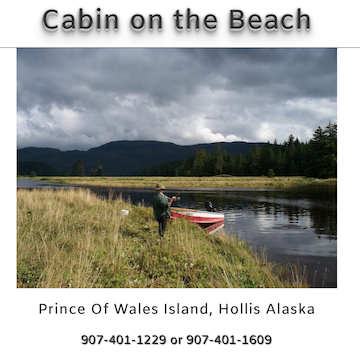Optimism for North Slope Oil
Posted: 23 Oct 2018 10:08 AM PDT
By Tim Bradner
Those new oil discoveries announced recently on the North Slope are pretty remarkable. It wasn’t too long ago that we’d pretty much given up on major new finds, at least in areas open to exploration.
Now billion-barrel new fields are being found. They aren’t super-giants like the Prudhoe Bay and Kuparuk River fields but the discoveries like ConocoPhillips’ new “Willow” and “Pikka,” now planned for development by Oil Search, an Australian company, are still very substantial.
We have a real possibility of actually increasing the amount of oil flowing through the Trans Alaska Pipeline System. Even if that doesn’t happen it seems a sure bet that production from the slope will at least remain stable. In fact, it has been essentially stable over the last two years. For that, let’s give a hand to the operators of the large existing fields. The Prudhoe field, operated by BP, still produces about half of the North Slope oil. There’s also ConocoPhillips, the Kuparuk field operator, and Hilcorp Energy, which manages several smaller fields on the slope.
Keeping production steady is no small feat given 6 percent annual declines we’ve seen in past years. TAPS was built to carry 2 million barrels a day since 1989 production has dropped to about a fourth of that, to just over 500,000 barrels daily. [..,]
A lot of Alaskans are hoping for some really big new discoveries, the kind that will really move the needle on production, from the Arctic National Wildlife Refuge, a highly prospective area where there will soon be lease sales.
But ANWR is a crap-shoot. Even the best exploration prospects could be dry holes. Look no further than Shell’s spectacular flop in 2013 at the highly-touted Burger well in the Chukchi Sea, or the failure of Mukluk, a costly Beaufort Sea well drilled in the early 1980s in which companies like Sohio and BP had great confidence, but proved to hold water, not oil.
The new discoveries, which all around the Colville River and in the northeastern National Petroleum Reserve-Alaska west of Prudhoe Bay and Kuparuk, seem pretty good bets, in contrast. [...]
Cumulatively, what’s now discovered could bringing tens of thousands of new barrels of oil per day to TAPS in the near future.
What’s remarkable is that these finds are in areas like the northeast NPR-A that have been explored for years by companies, but without commercial-scale finds. Why are discoveries being made in what was until recent years considered a lot of caribou pasture?
New technology is one answer. Explorers continue to improve their ability to spot potential underground oil traps in geologic formations previously thought unproductive, and once the oil is found to commercially extract it.
Companies are also quick to credit state tax changes made in 2013 for this, which were very controversial at the time. The tax changes improved the economics of finding and developing new oil set the stage for a burst of new exploration. [...]
There are also “multi-lateral” wells, another development, that involve as many as five wells drilled underground from a single vertical well to the surface. These lateral wells can target several oil formations which can be produced through one surface production pad and set of flow lines and utilities instead of several sets if the deposits were developed on a stand-alone basis, as done previously. Again, huge savings.
These technologies are now being combined, with horizontal drilling and multilateral wells used together, and when new methods of profiling and mapping underground rock layers are added we see savings enough to allow tens of millions of barrels of new oil resources to be at an economic even point at oil prices below what they are today.
This is a breakthrough. Previously we assumed $90-per-barrel and $100-per-barrel oil prices would be needed to develop new North Slope oil. Now companies say $60 may be enough, and for some deposits near infrastructure even less.
Here’s the best part: A lot of these new technologies are being developed right here in Alaska. Horizontal drilling, on a commercial scale, was pioneered by BP in the 1980s for Prudhoe Bay.
Horizontal drilling on the North Slope set the stage for shale oil and gas development in the Lower 48, where horizontal wells are used, and that has upended the world’s petroleum industry.
Multilateral wells were similarly pioneered in Alaska, by ARCO Alaska (predecessor to ConocoPhillips) a few years later.
Alaska, in effect, is an applied technology laboratory for the industry because the gain, in new oil, is substantial enough to offset the risk. Alaska contractor companies get the benefit of experience with this, also. Alaskan-owned Doyon Drilling is now operating some of the world’s most advanced drill rigs with horizontal drilling capabilities.
All in all, we’re in a good place, with experienced companies, huge untapped resources, and now oil prices moving up.
Tim Bradner is editor of the Alaska Economic Report and is the 2018 Atwood Visiting Professor of Journalism at the University of Alaska Anchorage





















No comments:
Post a Comment
Note: Only a member of this blog may post a comment.